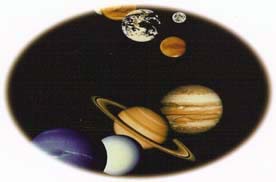This investigation will help you to:
Amazing Space, by Dr. Sten Odenwald
This is an astronomy education site that provides insight into what research astronomy is like and what astronomers actually do at ground-based and space-based observatories.
The American Museum of Natural History, Smithsonian Institute
Find a great source of interactives, online videos, and data visualizations for Astronomy. Science Bulletins brings you weekly news of the observable universe with
- in-depth Feature stories about cutting-edge developments in astronomy and astrophysics
- a weekly Snapshot of images from observatories around the world and in space
- and Astro Viz, a three-dimensional journey through the cosmos.
The Astronomy Net, by John Huggins
A ready reference for astronomy resources and related topics such as amateur telescope making, black holes, and unidentified flying objects (UFOs).
Bad Astronomy, Maintained by astronomer Phil Platt
This site is devoted to correcting myths and misconceptions about astronomy and related topics.
Photo Gallery of MeteorWrongs, Randy Korotev, Washington University
The site showcases more than 100 objects misidentified as meteorites. Click on a photo and a caption comes up alongside the object explaining why the rock probably is not a meteorite and suggesting what it most likely is and why. This site provides criteria for recognizing space objects.
Amazing Space, Space Telescope Science Institute
Learn more about our universe by exploring its planets, galaxies, comets, black holes, and more. This site is rich with science content, teaching tools, interactive pages and games for teachers and students of all ages. Be sure to check out the “Myths vs. Reality” section, which addresses misconceptions relating to black holes, comets, stars, and more.

